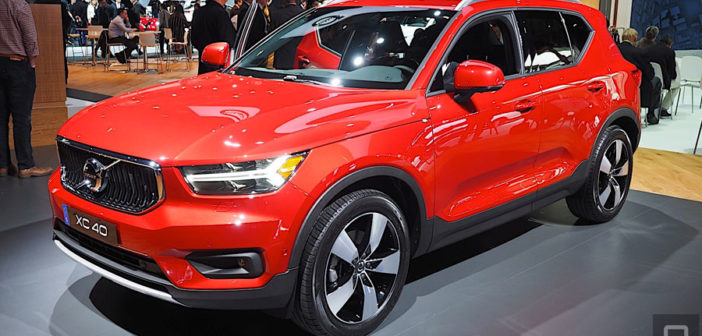At the 2017 LA Auto Show on Wednesday, Volvo revealed a monumental new means of owning and operating their vehicles. For $600 a month, the car company will sell customers an XC40 crossover SUV. That figure includes not only the cost of the car, tax and delivery, but also insurance (regardless of your age or location) and access to Volvo’s new “concierge” service. All you have to pay for is the gas you use. They’re calling it Care by Volvo.
“What we think is lacking today is there’s ways to simplify getting your hands on a car, like getting a lease,” Chief Digital Officer, Atif Rafiq, told Engadget. “But a subscription is entirely different that because it solves for a bunch of wider things in actually owning a car. It’s not just getting the car, it’s maintaining it, it’s paying for additional things it needs like insurance. That’s all that in one flat fee is something simpler but is also more transparent.” You’ll of course still be able to buy Volvos outright or lease them if you prefer.
This follows last week’s news that the Swedish car company plans to sell “tens of thousands” of autonomous-ready XC90s to Uber between 2019 and 2021 for the ride sharer’s self-driving livery vehicle service. The two companies have been working in close coordination to develop the vehicles, which are based on Volvo’s Scalable Product Architecture (SPA). These vehicles will incorporate all the “safety, redundancy and core autonomous driving” hardware to make the autonomous cars street legal, according to the company’s press release. Uber, for its part, will supply the self-driving software.
“We met up through a connection we got a couple of years back and understood quite early that we had a mutual interest here in developing autonomous cars,” Senior Vice President of Research & Development, Henrik Green, explained to Engadget. “We’re developing the base car that has the redundancy, the electrical and the software architecture to drive a car that is then steered by an autonomous computer.”
Volvo’s collaboration with Uber is not the extent of its self-driving aspirations, mind you. “We are focusing our internal resources and our skills to develop the base car for autonomous drive,” Green continued. “Next to that we are working on our own autonomous drive system for consumer, private owner experience, what we call the level 4 autopilot that we aim to go to market with in the 2021 timeframe.”
In effect, the Uber collaboration is acting as a prototype testbed for the car company, allowing them to more quickly develop these autonomous systems. To that end, Volvo has three initiatives in the works to get there. “We have the base car that needs to be compatible with the self driving system,” Green said. “We have our own development of an autonomous driver application for for retail customers.” That’s the software “brain” that actually directs the vehicle, a system Volvo’s developed in collaboration with the company, Zenuity. “Then, thirdly, what we’re talking about here is what we call the Drive Me initiative and that’s a research project where the main focus is to understand how humans interact with the self-drive system,” Green concluded.
Despite the quickly approaching 2021 timeframe for rollout, there remain a number of technical and, perhaps more importantly, policy-based issues that must be overcome. Similar to how the first few generations of mobile phones were limited to specific coverage areas, self-driving cars might also only work in designated spaces. “When we launch the first commercial applications for the autopilot,” Green said. “I believe there will be designated areas where [its use]is approved and safe, and it’s all tested and the mapping is done. And those maps we grow over time — quite rapidly, I hope.”
–
This article first appeared in www.engadget.com
Seeking to build and grow your brand using the force of consumer insight, strategic foresight, creative disruption and technology prowess? Talk to us at +9714 3867728 or mail: info@groupisd.com or visit www.groupisd.com





